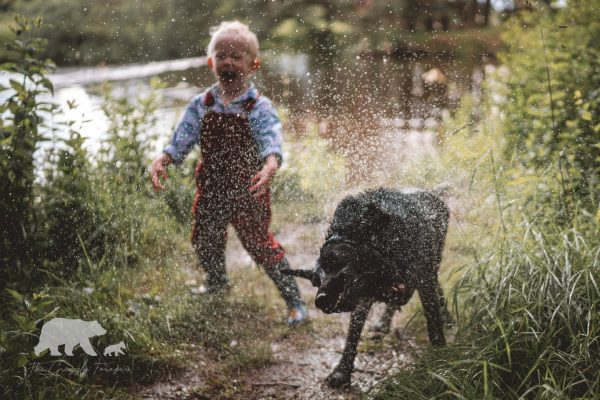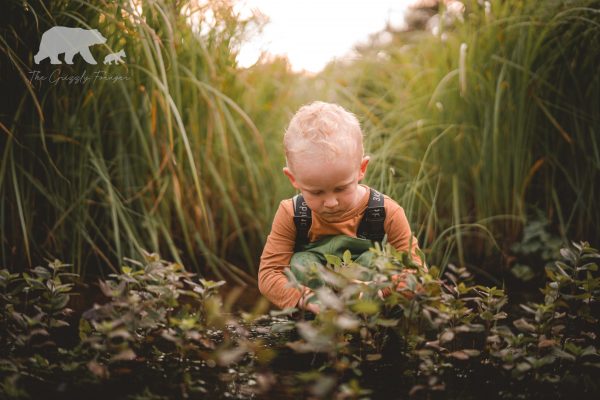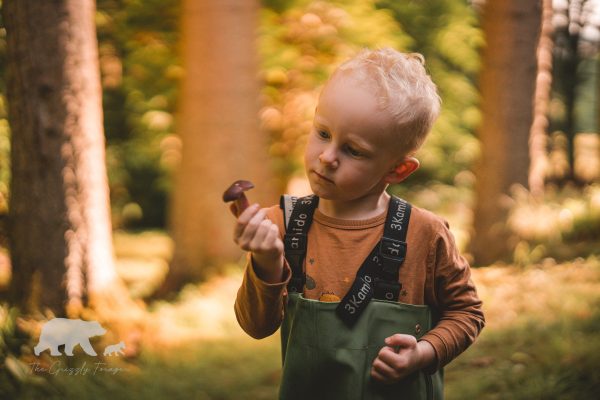Family Fun, Outdoors
Foraging For Food- A Great Outdoor Activity
Messing about in the woods has always been a favourite pastime for most kids, but for Arthur, aged 3, it has an extra special meaning.

Arthur loves nothing better than foraging in the woods of Northumberland, for all kinds of edible delights. Whatever the weather, Arthur and his Dad John, pull on their waders and wellies or sunhat and shorts and hit the trails looking for the elusive stinkhorn (or Big stinky willies, as Arthur has delightfully renamed them) or abundant berries of red, black and blue.

It’s no revelation that being in nature has many benefits to children,

but Arthur’s mum, who is a clinical psychologist, firmly believes that foraging with kids is a magical way of connecting with the land as well as with each other. It also is a wonderful way of learning and experiencing new things as a family:
Our little boy, Arthur-Felix, is three, and has become quite the little forager! He comes out with us every day, and can identify lots of edible plants and fungi, like sorrel, wood sorrel, red clover, heal-all, water mint, thyme, rosebay willowherb, elderflower, bilberry, strawberry, blackberry, raspberry, chanterelles and stinkhorn. We also teach him about toxic plants, such as foxglove, and always iterate that he’s not to put anything into his mouth unless we say it’s ok.
To follow Arthur’s foraging adventures follow The Grizzly Forager on Instagram.
A Guide To Foraging
Although generally speaking, foraging is permitted in the vast majority of public spaces; parks, beaches, nature reserves, woodlands and hedgerows, there may be some restrictions as to what you can legally remove. The Woodland Trust advises that over picking could result in devastation at some of their sites, as they serve as habitats for rare or vulnerable species. Foraging, even for small amounts of fungi or other species, is not advisable in certain areas. These sites are easily identified through signage.
It’s also a good idea to check whether foraging for commercial purposes is prohibited in certain areas.

Know your fungi! Never pick or consume anything that you don’t know. Not only could it be a rare and protected species, it could also be deadly poisonous. Use reference books or apps to identify them. If you are collecting fungi, only take mushrooms that have opened their caps, do not collect small ‘button’ mushrooms.
The Wildlife and Countryside Act (1981)
It is illegal to dig up or remove any kind of algae, lichen, fungi and plant from the land on which it is growing, without permission from the landowner or occupier. Some species are specially protected against picking, uprooting, damage and sale. A list of these can be found here.
Things To Forage
Part of the beauty of foraging is that it’s a year-round activity. Seasons play a big part, and knowing your plants is vital. Plants can provide different offerings at different times of the year. Roses, for example, flower in mid- to late spring and then produce hips towards the end of summer. The best time to pick nettle leaves is the first few weeks of spring, but if they’ve been cut back they can also reap a harvest again in early summer.

Here’s a seasonal calendar on the best picks of each month:
August– Cherries, raspberries, damsons
September– Rose hips, elderberries, blackberries, blackthorn berries
October– Hazelnuts, walnuts, sweet chestnuts, beech nuts
November– Oyster mushrooms, winter chanterelles, hawthorn berries, medlars
December– Wood blewit mushroom, clams, mussels, mackerel
January & February– Chickweed, hairy bittercrest
March– Burdock root, morel mushrooms, violets
April– Wild garlic, nettle, birch leaves
May– Cow parsley, elder-flower, sorrel
June– Sweet honeysuckle, dandelions, rose petals
July– Wild strawberries, chanterelles, borage
For places to forage here’s a great Map to help. You can search by area or food. Whether you decide to forage for fun

or food,

this activity brings people and nature together in a truly engaging way.
Thank you to John & Arthur for the photos.

 Français
Français
